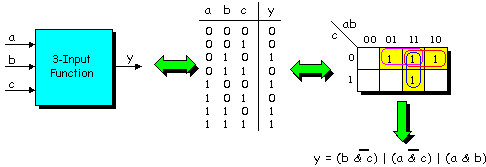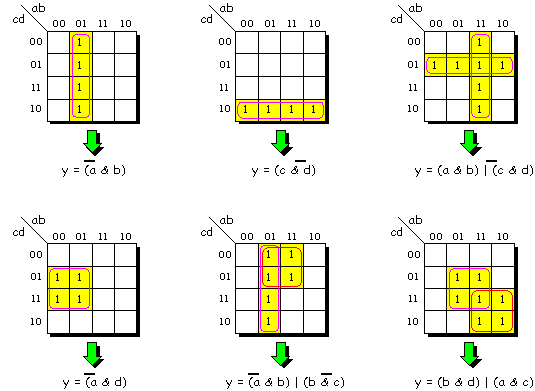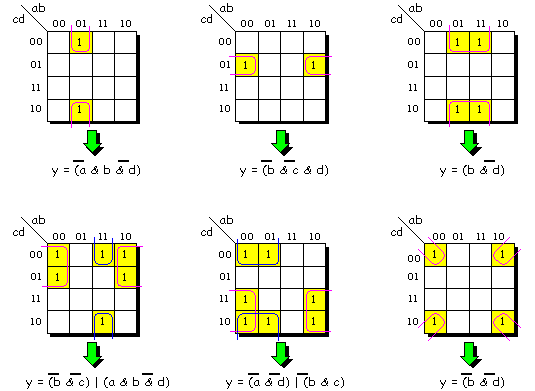|
In the case
of a 3-input Karnaugh map, any two horizontally or vertically adjacent
minterms, each composed of three variables, can be combined to form a new
product term composed of only two variables.
Similarly,
in the case of a 4-input
map, any two adjacent minterms, each composed of four variables, can be
combined to form a new product term composed of only three variables.
Additionally, the 1s associated with the minterms can be used to form
multiple groups. For example, consider a new 3-input function (Figure 5). |
|

Figure
5: Karnaugh map minterms can be used to form multiple groups. |
|
|
Groupings can
also be formed from four adjacent minterms in which case two redundant
variables can be discarded; consider some 4-input Karnaugh map examples
(Figure 6). In fact, any group of 2n adjacent minterms can be
gathered together, where
n is a positive integer.
For example, 21 = two minterms, 22 = four minterms, 23
= eight minterms, and so forth. |
|
|

Figure
6: Some example Karnaugh map groupings of four adjacent minterms. |
|
|
As was noted
above, Karnaugh map input values are ordered so that the values associated
with adjacent rows and columns differ by only a single bit. One result of
this ordering is that the top and bottom rows are also only separated by a
single bit; similarly, the left and right columns are only separated by a
single bit. It may help to visualize the map rolled into a horizontal
cylinder such that the top and bottom edges are touching, or into a vertical
cylinder such that the left and right edges are touching. This leads to some
additional grouping possibilities (Figure 7). |
|
|

Figure
7: Some additional Karnaugh map grouping possibilities. |
|
|
Note especially
the last example. Diagonally adjacent minterms generally cannot be used to
form a group, however, remembering that the left-right columns and the
top-bottom rows are logically adjacent, the four corner minterms can be used
to form a single group. |


